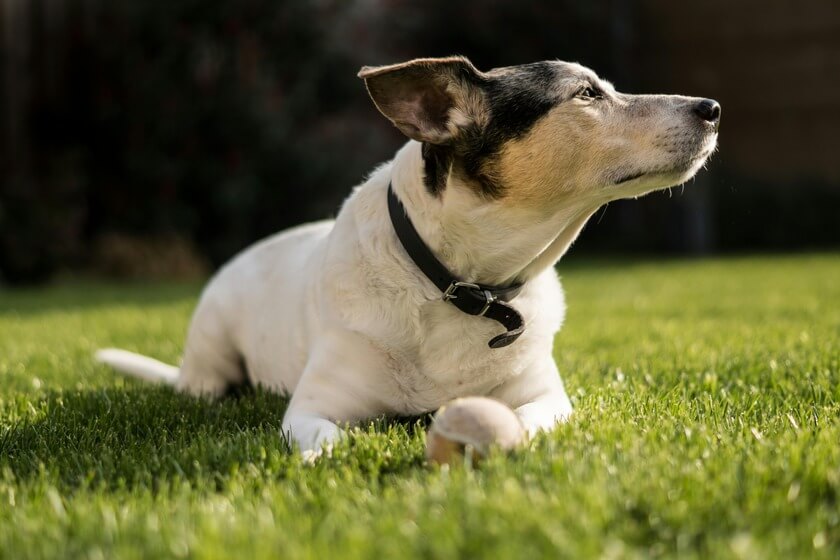How to Use a Dog Training Collar: A Complete Guide for Beginners
Are you a new dog owner looking to shape your furry friend’s behavior?
A training collar can be a vital tool in your arsenal, but it’s essential to use it correctly. However, many dog owners are unsure about how to use a dog training collar properly, which can lead to confusion or setbacks.
This comprehensive guide will walk you through the steps of using a dog training collar effectively, ensuring both your dog’s safety and successful training.
We’ll cover everything from choosing the right collar to understanding how it works. By the end of this article, you’ll have the knowledge and confidence to use a training collar as a positive reinforcement tool to help your dog learn and grow.
What is the Purpose of a Dog Training Collar
A dog training collar is designed to assist in guiding your dog toward good behavior. It serves as a gentle reminder for your dog to follow commands, such as staying close during walks or learning not to pull on the leash.
What is the Use a Dog Training Collar
The collar helps bridge the communication gap between you and your dog by giving them clear signals. When used properly, it encourages positive behavior while discouraging unwanted actions in a safe and effective way.
It’s not meant to replace your bond or the patience you show in training, but to support your efforts in teaching your dog important life skills.
Here are some key benefits:
- Improved recall – A training collar can help strengthen your dog’s recall, making it easier to control their behavior and keep them safe.
- Reduced leash pulling – By using a training collar effectively, you can discourage leash pulling and make walks more enjoyable for both you and your dog.
- Consistent communication – A training collar provides a consistent and clear way to communicate with your dog, helping them understand what is expected of them.
- Safety – In certain situations, such as off-leash training or when encountering potentially dangerous situations, a training collar can help you keep your dog safe.
Ultimately, the goal of a training collar is to make learning easier for your dog while keeping them safe. Understanding this purpose will help you use the collar as a tool to guide your dog toward success, not just in training but in developing good habits that last a lifetime.
How to Pick the Right Training Collar for Your Pet
In this section, we’ll talk about how to choose the right training collar for your dog. With so many options available, picking the right one can feel overwhelming, but it doesn’t have to be.
Types of Collars for Dog Training
There are several types of dog training collars available, each with its own unique features and uses. Here’s a brief description of each type:
- Flat collars – These are the most common type of collar and are suitable for general use. However, they can be prone to slipping, especially for dogs with strong necks.
- Martingale collars – Martingale collars have a loop that tightens when your dog pulls, preventing them from slipping out. They are often used for dogs that tend to pull on the leash.
- Prong collars – Prong collars have a series of blunt prongs that apply pressure to your dog’s neck when they pull. They should be used with caution and under the guidance of a professional trainer.
- E-collars – E-collars, also known as electronic collars or shock collars, use remote-controlled stimulation to correct unwanted behaviors. They should only be used by experienced trainers and with extreme caution.
It’s important to consult with a professional dog trainer to determine the most appropriate type of collar for your dog’s specific needs and temperament.
Factors to Consider
When choosing a dog training collar, it’s important to consider several factors to ensure the collar is the right fit for your dog. Let’s take a look at some key points to keep in mind.
- Size – The collar should fit your dog properly. A collar that’s too tight can be uncomfortable or harmful, while one that’s too loose may slip off. Measure your dog’s neck and choose a collar that can be adjusted to fit snugly but comfortably.
- Breed – Different breeds may need different types of collars. Breeds with narrow heads like greyhounds may benefit from a martingale collar, while a larger, stronger breed may require a sturdier option like a prong collar.
- Temperament – If your dog is calm and well-behaved, a simple flat collar may work. For more energetic or stubborn dogs, a training collar like an e-collar or prong collar might be more effective, but these should be used carefully.
- Training goals – Think about what you want to achieve with the training. If your goal is basic leash training, a flat or martingale collar may be enough. For more advanced training or behavior correction, you may need a more specialized collar.
Consulting a Professional Dog Trainer for Recommendations
If you’re unsure about which type of training collar is best suited for your dog, consulting with a professional dog trainer can be invaluable.
A trainer can assess your dog’s temperament, training goals, and specific needs to provide personalized recommendations. They can also offer guidance on how to use the collar effectively and safely.
By seeking professional advice, you can ensure that you’re making the best possible choice for your dog’s training journey.
Tips to Properly Use a Dog Training Collar
In this section, we’ll go over some simple steps on how to properly use a dog training collar. Using the collar correctly is important for your dog’s comfort and for making sure the training is effective.
Steps to Put the Collar on Your Dog
In this section, we’ll walk through the simple steps to properly put a training collar on your dog. Following these steps will help ensure your dog is comfortable and ready for training.
- Measure your dog’s neck – Before putting on the collar, make sure it’s the right size for your dog. You should be able to fit two fingers between the collar and your dog’s neck. This ensures it’s snug but not too tight.
- Unclip or open the collar – Most training collars will either buckle, clip, or slip over your dog’s head. Make sure the collar is fully open before attempting to put it on your dog.
- Position the collar correctly – Place the collar high on your dog’s neck, just below the jawline and behind the ears. This position gives you better control without causing discomfort.
- Secure the collar – Buckle or clip the collar in place, making sure it is properly fastened. Double-check that it isn’t too loose or too tight.
- Check for comfort – Once the collar is on, let your dog move around a bit to see if they’re comfortable. Adjust the fit if necessary, ensuring it stays in the right position.
Adjusting the Settings for Safe Use
If you’re using an electronic training collar, it’s crucial to adjust the settings appropriately to ensure your dog’s safety and comfort.
- Start with the lowest setting – If the collar has adjustable intensity levels (like vibration or static), always begin with the lowest setting. You want the correction to be gentle — just enough to get your dog’s attention without causing discomfort.
- Test the response – Once you’ve set the collar, observe your dog’s reaction. If your dog responds appropriately, stick with that level. If there’s no response, you can gradually increase the setting until your dog reacts calmly and appropriately.
- Avoid overuse – Only use the collar settings when necessary, such as during training sessions or when correcting specific behaviors. The collar should never be used constantly or as a punishment.
- Check the fit regularly – Make sure the collar stays in place and that it’s not too tight or loose. A well-fitted collar ensures the settings work as intended without causing harm.
By carefully adjusting and using the collar settings, you can keep your dog safe and make the training process smooth and positive.
Key Techniques on How to Use a Dog Training Collar Effectively
In this section, we’ll cover key techniques for using a dog training collar effectively. These simple strategies can help you get the best results while keeping your dog safe and comfortable.
- Use positive reinforcement – Always pair the use of the collar with positive reinforcement. For example, when your dog responds correctly to a command, praise them or give them a treat. This helps your dog understand that good behavior is rewarded.
- Keep training sessions short – Dogs learn best in short, focused sessions. Use the training collar for a few minutes at a time to avoid overwhelming your dog. A few short sessions a day can be more effective than one long session.
- Be consistent – Consistency is key to effective training. Use the collar in the same way each time for specific behaviors. For example, if you’re training for leash walking, always use the collar when your dog pulls.
- Watch for comfort – Keep an eye on your dog’s reaction. If they seem stressed or uncomfortable, take a break. The goal is to guide your dog, not cause discomfort.
By following these techniques, you can use a dog training collar in a way that strengthens your dog’s learning while making the process positive and stress-free.
Importance of Using a Dog Training Collar Correctly
A dog training collar can be a valuable tool in your dog’s training journey. However, it’s crucial to use it correctly to ensure your dog’s safety, comfort, and effective training.
It’s important to choose the right collar for your dog’s size and personality. Always follow the manufacturer’s guidelines to ensure a comfortable fit. Start with the lowest setting possible if the collar is adjustable, and never leave it on your dog for too long.
Using the collar correctly ensures your dog’s well-being and leads to better training results. A properly used training collar can be a helpful tool, but remember that it’s just one part of building trust and teaching your dog new skills. Keep it positive, be patient, and always prioritize your dog’s safety.
Are you ready to transform your dog training journey?
Reach out to us today for personalized guidance on how to use a dog training collar properly and effectively. As a trusted professional dog training services provider, we can give professional insights and recommendations to help you achieve your training goals.
Need help selecting the right dog training collar? Or perhaps you’re struggling with a specific training challenge? We’re here to assist you every step of the way!
Subscribe to our blog for more valuable dog training tips, tools, and resources.
Take the first step towards a happier, more fulfilling relationship with your furry friend!

